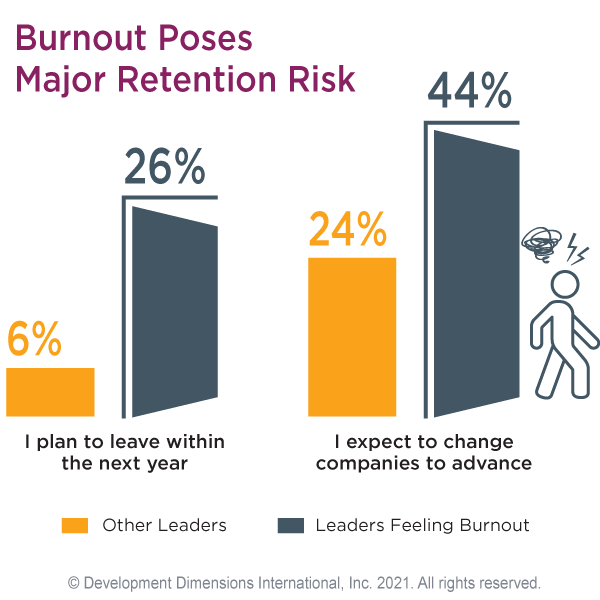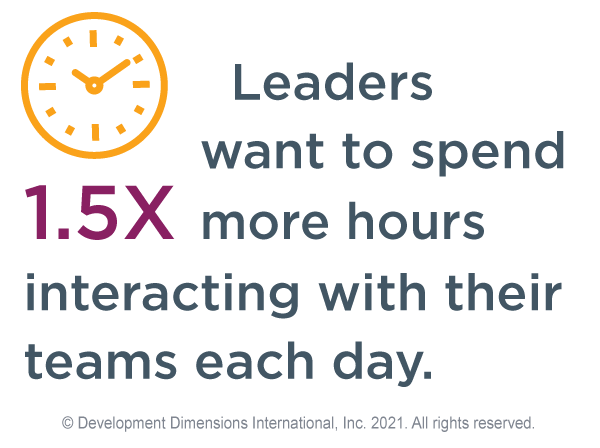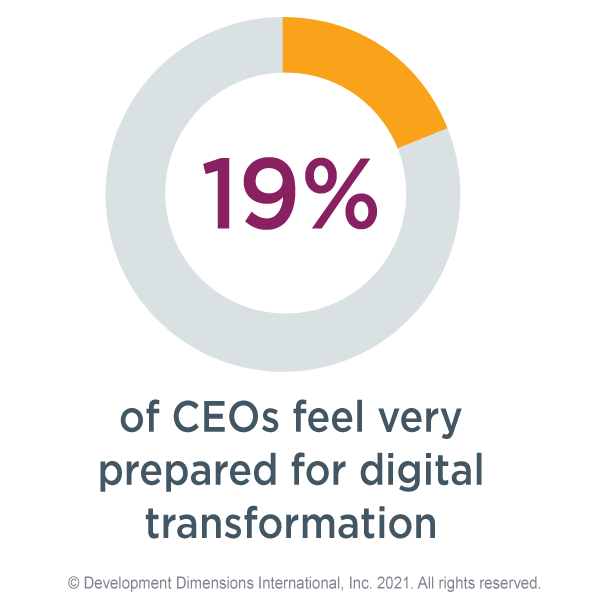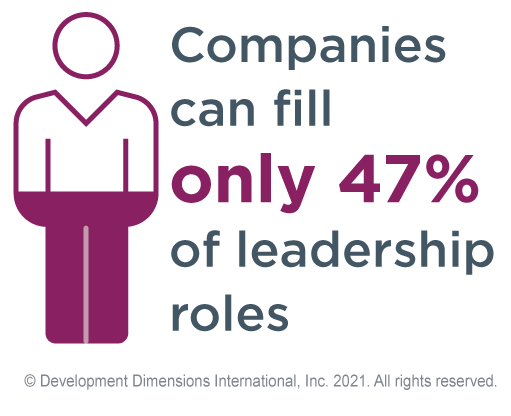Trends to Help You Maximize the Impact of Leadership Development
What are the leadership megatrends facing leaders and companies in the year ahead?
DDI recently released our Global Leadership Forecast 2021 in collaboration with Josh Bersin. This is the ninth leadership research study in DDI’s long-running forecast series extending back to 1999. This original research is based on responses from more than 15,000 leaders and 2,100 HR professionals across 1,700 organizations, 50 countries, and 24 industry sectors.
Within the report we highlight 11 top findings to inform the current and future state of leadership. We also break down where companies and leaders should focus their leadership development efforts to maximize impact on key leadership and business outcomes.
Looking across the research findings, we found an emerging set of themes that make up these five global leadership megatrends:


1. Leading Through Change and Uncertainty
In times of uncertainty, people look to leaders for direction and to provide a vision of what’s ahead. And this past year, leaders were at the forefront of massive crisis and change. Only one-third of leaders at all levels (35%) said they felt very effective at managing change. Given the uncertainty that’s still ahead, leaders need to be prepared for continued rapid and radical change.
As for companies? They will be facing a very different business landscape. A landscape where extremely agile, learning-oriented leaders who are ready to quickly learn new skills will be a necessity. HR professionals can help current and future leaders prepare for these challenges by developing them in the areas that will be called upon most. This will also support their growth and resilience.

2. Managing Burnout and Wellbeing
The pandemic tested companies’ and leaders’ capabilities to manage burnout, with employees nearing maximum human capacity. The good news? Even before the crisis, many companies were already prioritizing employee wellbeing initiatives. However, many were still largely unprepared to prevent burnout and the retention risk that comes with it. And leaders themselves were certainly not immune.
About 60% of leaders said they feel “used up” at the end of their workday. This had a big impact on whether they plan to stay at their jobs. Among leaders who feel burnout, 26% said they plan to leave their jobs in the next year, compared to only 6% of those who aren’t feeling as used up at the end of their day.
The threat is even higher among those with leadership potential. Eighty-six percent of high-potential employees said they feel burnout. How well companies manage burnout will continue to be directly influenced by leaders. They must know how to demonstrate empathy and provide coaching and support to their employees and teams.

3. Craving Connection in a Virtual Workplace
Through the COVID-19 pandemic, business leaders faced many new challenges. In particular, working remotely and having more difficult conversations with their teams was a struggle. Fewer than 1-in-5 leaders rated themselves as effective in leading virtual teams, which has quickly become essential.
To meet the challenge, leaders said they want more connection and to spend 1.5X more hours interacting with their teams. In fact, those who said their companies already valued time spent interacting were much more likely to be engaged in their roles. They were also more likely to say they want to stay through the next year at their current organization.

4. Advancing the Digital Future of Work
The influence of digital transformation, and similar virtual workplace transformation, is a pervasive theme throughout this year’s forecast. These tumultuous changes to how business and work get done have created intense demands on leaders of all functions. It’s also created a huge advantage for companies who were better prepared to operate in a digital environment.
Our prior GLF research has shown how digitally advanced companies and leaders financially outperform their less technologically savvy peers. Yet, three years later most companies are still challenged by digital transformation. Only 19% of CEOs feel their companies are very prepared for digital transformation.
And leaders at all levels ranked digital skills as their weakest areas. Leaders will continue to be tapped to step up to the challenges of a more digital future of work. This hammers home the need for companies, and especially executives, to strengthen their digital and virtual leadership skills.

5. Building and Retaining Top Talent
One of the biggest leadership megatrends for 2021 is developing the next generation of leaders. In fact, it was the top problem worrying CEOs. This issue outranked concerns over global recession and slowing economic growth. But it was followed closely by the need to attract and retain top talent.
Currently, companies report they can only fill 47% of critical roles. Additionally, only 11% said they have a strong bench of leaders for the future. And this is the lowest rate we’ve seen in a decade.
Leaders will have to be part of the solution to retaining talent. And to do this, they need to be equipped to better scout for, identify, and develop talent. According to HR, identifying and developing future talent is a top skill they look for in hiring leaders. It’s also the single-most critical skill they’ll need to develop in the next three years.
Best Practices for Leadership Success
The findings throughout Global Leadership Forecast 2021 take a research-driven approach to identify key leadership practices and skills that drive better outcomes.
Although much of the future is uncertain, drawing on these best practices helps define where companies must focus to be successful in the coming years ahead. By mastering the five leadership megatrends above, companies can differentiate their leadership strategy and create a competitive advantage, charting a course for a more prosperous future, even during times of disruption.
For more leadership trends, download the Global Leadership Forecast 2021.
Stephanie Neal is director of the Center for Analytics and Behavioral Research (CABER). She leads market and trend research focused on leadership and business innovation, and is general manager and lead author of DDI's Global Leadership Forecast.
Topics covered in this blog


